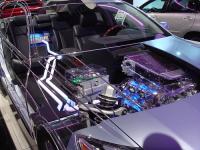Do you know of a resource that you think other teachers should know about?
Share your resource!
By becoming a member of Classroom Earth you become part of a nationwide community of high school educators teaching about the environment. Join Now.
Browse Resources
Search Tips
- Type the first few letters of a topic you're interested in, and a list of Key Terms will appear as choices.
- If you're looking for something else use the Keyword search near the top of the page.
- To find lessons, activities, or unit plans correlated to standards, type Correlated to Standards in the above Tag field.
- Use fewer criteria in your searches to yield more returns.





